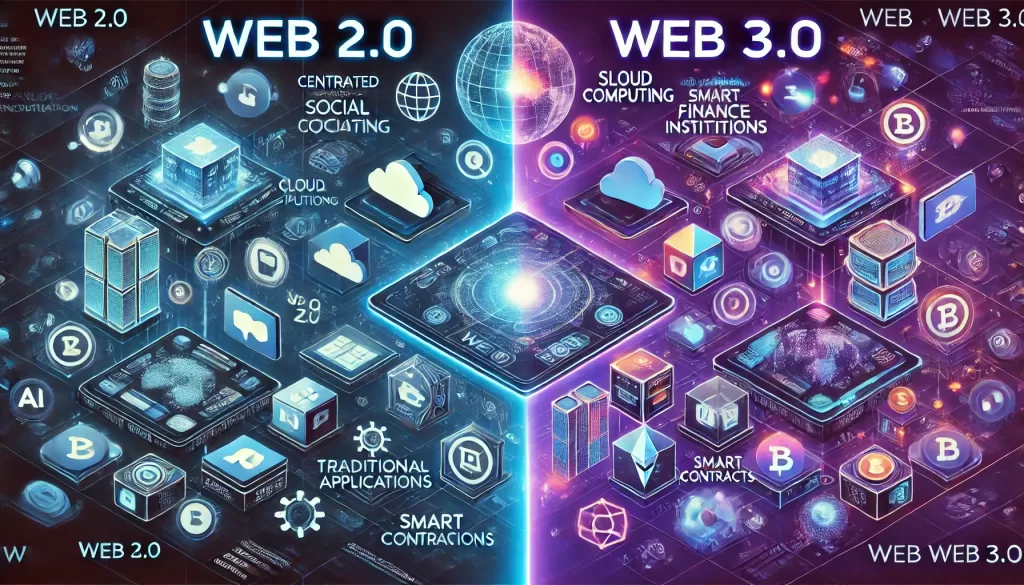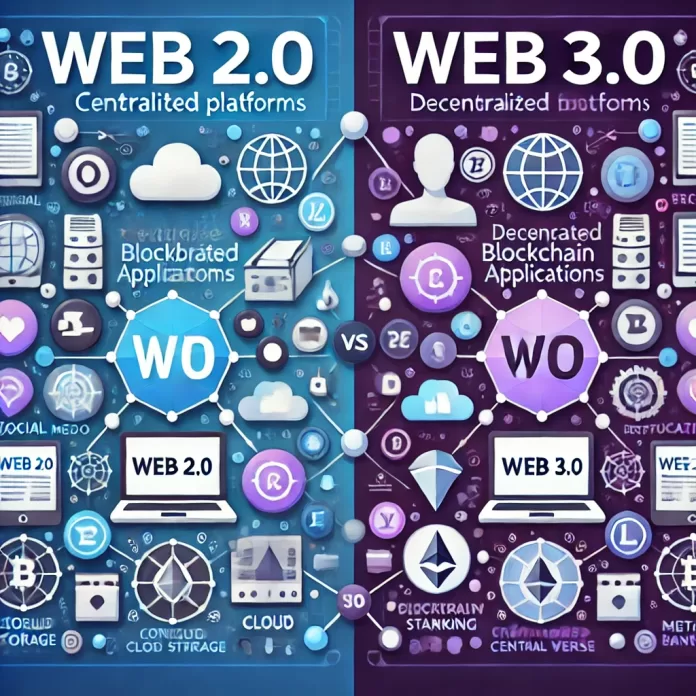The internet has evolved significantly over the years, moving from static pages to interactive experiences and now toward decentralization. Understanding the difference between Web 2.0 and Web 3.0 is crucial for businesses, developers, and users navigating the digital world.
What is Web 2.0?
Web 2.0 revolutionized how users interact with the internet. Unlike its predecessor, Web 1.0, which focused on static content, Web 2.0 introduced dynamic and user-generated content, enabling collaboration and social interaction. Key features include:
- Social Media – Platforms like Facebook, Twitter, and Instagram thrive on user engagement.
- Cloud Computing – Services like Google Drive and Dropbox store and manage data online.
- Interactive Websites – Web applications like YouTube, Wikipedia, and WordPress allow real-time collaboration.
- Centralized Control – Large corporations control data, leading to privacy concerns and data monopolies.
What is Web 3.0?
Web 3.0 represents the next stage of the internet, emphasizing decentralization, security, and user ownership. Built on blockchain and AI technologies, Web 3.0 is designed to give users more control over their data and digital identity. Key features include:
- Decentralization – No single entity owns or controls the internet, reducing censorship.
- Blockchain Technology – Secure transactions and smart contracts power decentralized applications (dApps).
- Artificial Intelligence & Machine Learning – Personalized and automated experiences improve user interaction.
- Cryptocurrency & NFTs – Digital assets enable decentralized finance (DeFi) and ownership of virtual goods.
Web 2.0 vs Web 3.0: Key Differences
| Feature | Web 2.0 | Web 3.0 |
|---|---|---|
| Ownership | Centralized (Big Tech) | Decentralized (Users) |
| Data Storage | Cloud-based | Blockchain-based |
| Monetization | Ads & subscriptions | Crypto & tokenomics |
| Security | Prone to breaches | Enhanced with encryption |
| User Privacy | Limited control | Full control (self-sovereign identity) |
The Impact of Web 3.0 on Businesses
Web 3.0 is disrupting industries by reducing reliance on intermediaries. Here’s how different sectors benefit:
- Finance – DeFi platforms eliminate traditional banks, offering decentralized lending.
- Gaming – Play-to-earn models enable users to own in-game assets through NFTs.
- Healthcare – Secure medical records with blockchain enhance data privacy.
- E-commerce – Smart contracts enable trustless transactions between buyers and sellers.
Challenges and Adoption of Web 3.0
While Web 3.0 promises a revolutionary internet, challenges remain:
- Scalability – Blockchain networks face transaction speed limitations.
- Regulatory Uncertainty – Governments are yet to define clear policies.
- User Adaptation – Mass adoption requires easier interfaces and better education.
Web 3.0 is reshaping the digital world, offering greater security, transparency, and user control. While Web 2.0 connected people, Web 3.0 empowers them. Businesses and individuals must adapt to this evolving landscape to stay ahead in the next internet revolution.
















